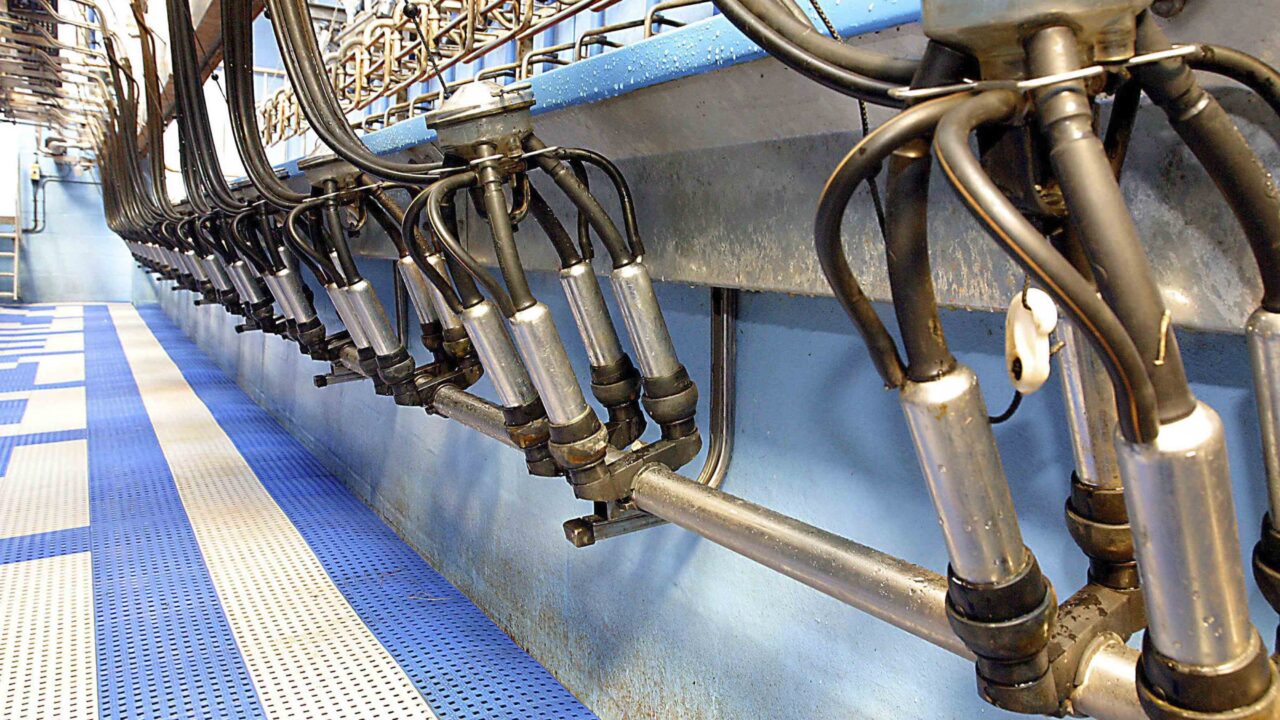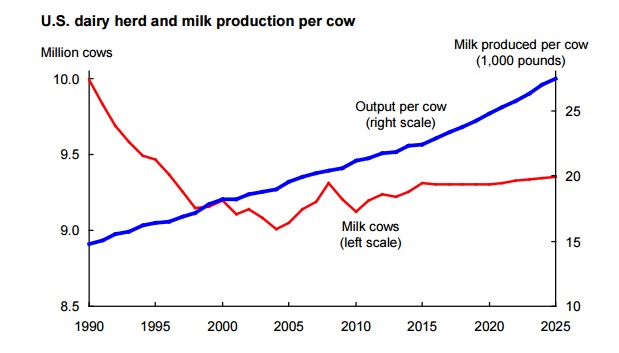A surge in milk production in the United States is being forecast for the next ten years, by its Department of Agriculture (USDA).
The USDA’s long-term agricultural projections forecast milk production by 2025 to increase to 112 billion litres, up almost 23% on 2015 levels.
The majority of this increase is expected to come from productivity improvements, with milk production per cow increasing to 12,000 litres, an increase of 2,200 litres per cow compared to 2015.
The USDA says this reflects continued technological and genetic developments as well as efficiency gains resulting from consolidation in the sector.
US dairy cow numbers are projected to decrease in 2016, remain about even at 9.3m head through 2020, and then rise through the remainder of the projection period.
Rising milk prices after 2018 and lower feed costs than in recent years give favorable returns to producers and provide economic incentives for this continued expansion.
US milk prices
Nominal farm-level milk prices are projected to decline through 2018 as lower feed costs encourage increased production. Prices then rise faster than the general inflation rate over the remainder of the projection period, largely on the strength of export market gains.
Domestic demand
The USDA says domestic demand in the US is expected to grow at a strong pace, with commercial use of dairy products rising faster than the growth in U.S. population over the next decade.
Demand for cheese is expected to rise due to greater consumption of prepared foods and increased away-from-home eating. Butter demand is also expected to grow, in part due to the phase-out of trans fats. A decline in per capita consumption of fluid milk products is expected to continue.
US dairy exports
Commercial exports of U.S. dairy products declined in 2015, mostly due to lower demand from China and greater competition from the EU as a result of the Russian trade ban.
However, U.S. exports are projected by the USDA to recover and expand over the next decade, led by greater exports of products that are high in nonfat milk solids, such as nonfat dry milk.
It says exports are projected to reach record levels on both a milk-fat and a skim-solids basis.
The USDA forecasts that production increases in other major dairy exporting countries are expected to lag growth in global import demand.

